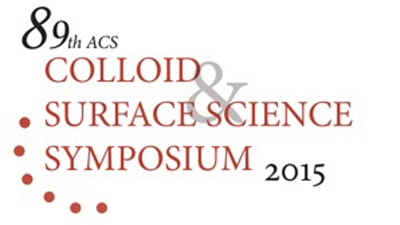CMU To Host ACS Colloid & Surface Science Symposium
Global Scientists To Present Nanotechnology Research
By Jocelyn Duffy / 412-268-9982Daniel Tkacik / 412-268-1187
Close to 600 researchers from 22 countries will convene at Carnegie Mellon University this month to participate in the 89th annual meeting of the American Chemical Society Division of Colloid and Surface Chemistry. The meeting, June 15 — 17, will highlight the latest scientific advances in colloid and surface science, with topics ranging from using nanotechnology to clean up oil spills to developing advanced drug delivery methods.
The an nual symposium traditionally has been organized and hosted by a university that has a deep-rooted history with and expertise in colloid and surface science. This marks the third year the meeting will be held at Carnegie Mellon. It was last held at CMU in 2001. “The interdisciplinary nature of Carnegie Mellon is a natural fit for this conference, which brings a number of different fields together,” said Physics Professor Stephen Garoff, co-chair of the meeting and head of Carnegie Mellon’s Department of Physics. “There are no borders, no limits to how we do our work.”
nual symposium traditionally has been organized and hosted by a university that has a deep-rooted history with and expertise in colloid and surface science. This marks the third year the meeting will be held at Carnegie Mellon. It was last held at CMU in 2001. “The interdisciplinary nature of Carnegie Mellon is a natural fit for this conference, which brings a number of different fields together,” said Physics Professor Stephen Garoff, co-chair of the meeting and head of Carnegie Mellon’s Department of Physics. “There are no borders, no limits to how we do our work.”
Colloid and surface science is a diverse field that requires input from many disciplines, including chemistry, biological physics, materials science and chemical engineering. Carnegie Mellon faculty are conducting numerous research projects in colloid and surface science that span multiple disciplines.
Research projects being presented at the meeting by Carnegie Mellon scientists include:
- Garoff has teamed up with symposium co-chair and Biomedical and Chemical Engineering Professor Bob Tilton, Biomedical and Chemical Engineering Professor Todd Przybycien and the University of Pittsburgh’s Tim Corcoran to improve the delivery of aerosolized drugs to damaged parts of the lung. Current aerosolized drugs tend to deposit on healthy parts of the lung, inadvertently shortchanging the unhealthy areas that actually need the drug. The research team is developing aerosol formulations to get around this problem.
- Kathryn Whitehead, an assistant professor in CMU’s Department of Chemical Engineering, is trying to improve drug delivery in other ways. Since many drugs are altered or destroyed by the body before they reach their target destination, Whitehead and her colleagues are developing nano-sized drug delivery “vehicles” that protect the drug during transport.
- Conference co-chair Jim Schneider, professor of chemical engineering, is working on reducing the time needed to analyze DNA for medical diagnostics and forensic identification. Current analyses, which use gel electrophoresis, take up to three hours to complete, but Schneider’s research group is using surfactant micelles, nanometer-sized lipid molecules, to speed up DNA analyses to as little as 30 seconds.
- Newell Washburn, associate professor of chemistry and biomedical engineering, is studying how lignin, a biopolymer that is found in nature and is a by-product of paper production and other manufacturing processes, can be used to enhance commercial products. Washburn’s lab is developing lignin to be used as a foaming agent, cement plasticizer and surfactant.